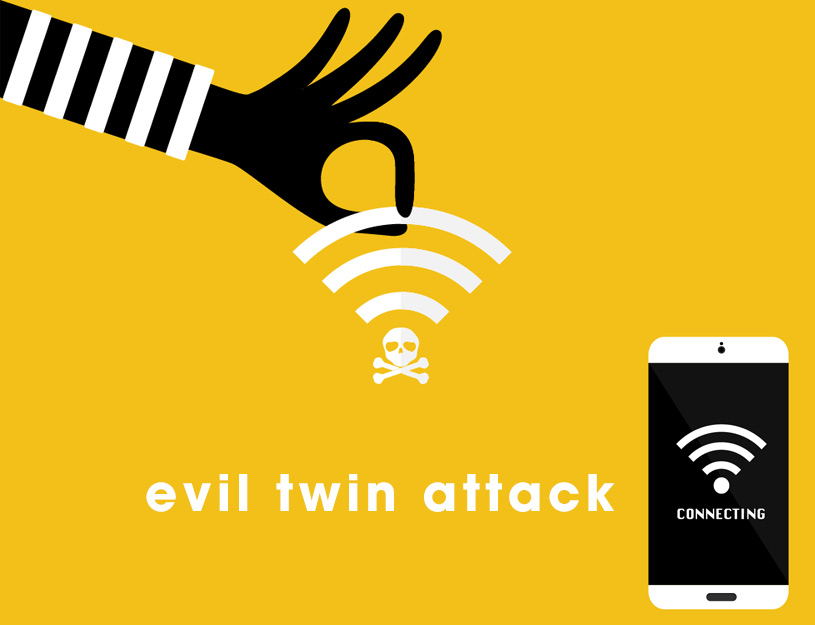
As we navigate the ever-evolving landscape of cybersecurity, the threat of digital dangers continues to rise. This Thanksgiving, amidst family gatherings and festive celebrations, a new cybersecurity concern emerged, catching many off guard. This blog post delves into the recent clickjacking vulnerability identified by the Cybersecurity and Infrastructure Security Agency (CISA) affecting popular browsers, offering insights into how we can safeguard our digital lives against such stealthy threats.
The Emergence of the Clickjacking Threat
Clickjacking is a deceptive technique employed by malicious websites, designed to trick users into clicking on something other than what they perceive. This digital bait-and-switch tactic can lead to dire consequences, such as the compromise of personal information, malware downloads, and unauthorized fund transfers. During the Thanksgiving holiday, CISA identified a clickjacking vulnerability in several versions of Mozilla’s Firefox and Thunderbird browsers. The risk? Attackers potentially gaining unauthorized control over targeted systems.
The Thanksgiving Alert by CISA
In response to this emerging threat, CISA issued a critical alert, urging users and administrators to review specific advisories and promptly update their browsers. The advisory highlights versions affected, including Firefox iOS 120, Firefox 120, Firefox ESR 115.5, and Thunderbird 115.5.0. The CVE-2023-6204 advisory, as detailed on Mozilla’s security advisories page, outlines the risks associated with out-of-bounds memory access in canvas images and full-screen transition clickjacking.
Protecting Yourself from Clickjacking
To defend against this clickjacking threat, here are some steps you can take:
- Update Immediately: Ensure that your browsers and software are updated. This is a crucial step in enhancing your cybersecurity posture.
- Be Cautious of Permissions: Exercise skepticism with unexpected permission prompts. Decline suspicious prompts and revisit websites through trusted sources.
- Regular Backups: Establish a routine for regular data backups. In case of a breach, having up-to-date backups can mitigate potential losses.
- Use Security Software: Implement reputable antivirus and anti-malware software. Websites like AV-Test offer comprehensive reviews and ratings of the best antivirus protection.
- Educate Yourself: Stay informed about the latest cybersecurity threats. Knowledge is a powerful tool in safeguarding your digital presence.
Broader Implications for Cybersecurity
Such vulnerabilities remind us of the constantly evolving nature of cyber threats. This incident underlines the importance of cybersecurity awareness and vigilance. Regular software updates, informed by credible sources like CISA, are crucial in protecting against these sophisticated cyber-attacks.
The recent Thanksgiving clickjacking threat is more than just a singular event; it’s a wake-up call to the broader implications in the realm of cybersecurity. This incident sheds light on several critical aspects of digital security in our increasingly interconnected world.
Evolving Nature of Cyber Threats
- Rapid Advancements in Technology: As technology evolves at a breakneck pace, so do the methods employed by cybercriminals. This constant evolution demands our security measures to be equally dynamic and forward-thinking.
- The Expanding Attack Surface: With the proliferation of IoT devices and the growing reliance on digital platforms, the potential points of vulnerability for cyber-attacks have multiplied, making comprehensive security strategies more crucial than ever.
The Importance of Cybersecurity Awareness
- Public Knowledge and Perception: There’s a growing need for public awareness about cybersecurity. Misconceptions and a lack of understanding can lead to vulnerabilities. Educating the masses on cybersecurity basics becomes vital.
- The Role of Media and Education: Media outlets and educational institutions play a pivotal role in spreading awareness. They can transform complex cybersecurity concepts into understandable information for the general public.
The Impact on Policy and Regulation
- Governmental Response and Legislation: Incidents like the clickjacking threat can prompt governments to introduce new policies or update existing regulations to bolster national cybersecurity defenses.
- International Collaboration and Standards: Cybersecurity is a global challenge that requires international cooperation. Setting global standards and sharing best practices are necessary steps towards a more secure digital world.
Business and Organizational Readiness
- Corporate Responsibility: Businesses, especially those handling customer data, must prioritize cybersecurity to protect both their interests and those of their clients.
- Emergence of Cybersecurity as a Core Business Strategy: Cybersecurity is no longer a peripheral issue but a central component of business strategy, essential for maintaining customer trust and business continuity.
The Human Factor
- Employee Training and Vigilance: Human error remains one of the largest security vulnerabilities. Regular employee training and fostering a culture of security-mindedness are key.
- The Role of Cybersecurity Professionals: There’s an increasing demand for skilled cybersecurity professionals. Their expertise is crucial in developing and implementing effective security strategies.
The Future of Cyber Defense
- Innovations in Cybersecurity Technologies: Advancements in AI, machine learning, and blockchain offer new ways to combat cyber threats.
- The Challenge of Balancing Privacy and Security: As we develop more sophisticated security measures, the balance between individual privacy and collective security becomes a crucial ethical and legal consideration.
Conclusion
The clickjacking threat identified this Thanksgiving serves as a stark reminder of the continuous need for proactive cybersecurity measures. It’s imperative to stay vigilant, regularly update our software, and remain informed about emerging digital threats to prevent falling prey to such attacks.
As we wrap up our discussion on the Thanksgiving clickjacking threat, it becomes clear that cybersecurity is not just a technical challenge, but a continuous journey of vigilance and adaptation. This recent incident serves as a crucial reminder of the dynamic nature of cyber threats and the importance of staying proactive in our digital defense strategies. By keeping our software updated, being wary of suspicious permissions, and educating ourselves about potential cyber dangers, we can significantly reduce our vulnerability to these invisible yet impactful threats.
In a world where digital connectivity is integral to our daily lives, being cyber-aware is not just an option but a necessity. Let’s take this opportunity to not only safeguard our own digital footprints but also to contribute to a safer, more secure online community. Remember, the first step towards cyber resilience starts with us. Stay safe and stay informed.

As we navigate the ever-evolving landscape of cybersecurity, the threat of digital dangers continues to rise. This Thanksgiving, amidst family gatherings and festive celebrations, a new cybersecurity concern emerged, catching many off guard. This blog post delves into the recent clickjacking vulnerability identified by the Cybersecurity and Infrastructure Security Agency (CISA) affecting popular browsers, offering insights into how we can safeguard our digital lives against such stealthy threats.
The Emergence of the Clickjacking Threat
Clickjacking is a deceptive technique employed by malicious websites, designed to trick users into clicking on something other than what they perceive. This digital bait-and-switch tactic can lead to dire consequences, such as the compromise of personal information, malware downloads, and unauthorized fund transfers. During the Thanksgiving holiday, CISA identified a clickjacking vulnerability in several versions of Mozilla’s Firefox and Thunderbird browsers. The risk? Attackers potentially gaining unauthorized control over targeted systems.
The Thanksgiving Alert by CISA
In response to this emerging threat, CISA issued a critical alert, urging users and administrators to review specific advisories and promptly update their browsers. The advisory highlights versions affected, including Firefox iOS 120, Firefox 120, Firefox ESR 115.5, and Thunderbird 115.5.0. The CVE-2023-6204 advisory, as detailed on Mozilla’s security advisories page, outlines the risks associated with out-of-bounds memory access in canvas images and full-screen transition clickjacking.
Protecting Yourself from Clickjacking
To defend against this clickjacking threat, here are some steps you can take:
- Update Immediately: Ensure that your browsers and software are updated. This is a crucial step in enhancing your cybersecurity posture.
- Be Cautious of Permissions: Exercise skepticism with unexpected permission prompts. Decline suspicious prompts and revisit websites through trusted sources.
- Regular Backups: Establish a routine for regular data backups. In case of a breach, having up-to-date backups can mitigate potential losses.
- Use Security Software: Implement reputable antivirus and anti-malware software. Websites like AV-Test offer comprehensive reviews and ratings of the best antivirus protection.
- Educate Yourself: Stay informed about the latest cybersecurity threats. Knowledge is a powerful tool in safeguarding your digital presence.
Broader Implications for Cybersecurity
Such vulnerabilities remind us of the constantly evolving nature of cyber threats. This incident underlines the importance of cybersecurity awareness and vigilance. Regular software updates, informed by credible sources like CISA, are crucial in protecting against these sophisticated cyber-attacks.
The recent Thanksgiving clickjacking threat is more than just a singular event; it’s a wake-up call to the broader implications in the realm of cybersecurity. This incident sheds light on several critical aspects of digital security in our increasingly interconnected world.
Evolving Nature of Cyber Threats
- Rapid Advancements in Technology: As technology evolves at a breakneck pace, so do the methods employed by cybercriminals. This constant evolution demands our security measures to be equally dynamic and forward-thinking.
- The Expanding Attack Surface: With the proliferation of IoT devices and the growing reliance on digital platforms, the potential points of vulnerability for cyber-attacks have multiplied, making comprehensive security strategies more crucial than ever.
The Importance of Cybersecurity Awareness
- Public Knowledge and Perception: There’s a growing need for public awareness about cybersecurity. Misconceptions and a lack of understanding can lead to vulnerabilities. Educating the masses on cybersecurity basics becomes vital.
- The Role of Media and Education: Media outlets and educational institutions play a pivotal role in spreading awareness. They can transform complex cybersecurity concepts into understandable information for the general public.
The Impact on Policy and Regulation
- Governmental Response and Legislation: Incidents like the clickjacking threat can prompt governments to introduce new policies or update existing regulations to bolster national cybersecurity defenses.
- International Collaboration and Standards: Cybersecurity is a global challenge that requires international cooperation. Setting global standards and sharing best practices are necessary steps towards a more secure digital world.
Business and Organizational Readiness
- Corporate Responsibility: Businesses, especially those handling customer data, must prioritize cybersecurity to protect both their interests and those of their clients.
- Emergence of Cybersecurity as a Core Business Strategy: Cybersecurity is no longer a peripheral issue but a central component of business strategy, essential for maintaining customer trust and business continuity.
The Human Factor
- Employee Training and Vigilance: Human error remains one of the largest security vulnerabilities. Regular employee training and fostering a culture of security-mindedness are key.
- The Role of Cybersecurity Professionals: There’s an increasing demand for skilled cybersecurity professionals. Their expertise is crucial in developing and implementing effective security strategies.
The Future of Cyber Defense
- Innovations in Cybersecurity Technologies: Advancements in AI, machine learning, and blockchain offer new ways to combat cyber threats.
- The Challenge of Balancing Privacy and Security: As we develop more sophisticated security measures, the balance between individual privacy and collective security becomes a crucial ethical and legal consideration.
Conclusion
The clickjacking threat identified this Thanksgiving serves as a stark reminder of the continuous need for proactive cybersecurity measures. It’s imperative to stay vigilant, regularly update our software, and remain informed about emerging digital threats to prevent falling prey to such attacks.
As we wrap up our discussion on the Thanksgiving clickjacking threat, it becomes clear that cybersecurity is not just a technical challenge, but a continuous journey of vigilance and adaptation. This recent incident serves as a crucial reminder of the dynamic nature of cyber threats and the importance of staying proactive in our digital defense strategies. By keeping our software updated, being wary of suspicious permissions, and educating ourselves about potential cyber dangers, we can significantly reduce our vulnerability to these invisible yet impactful threats.
In a world where digital connectivity is integral to our daily lives, being cyber-aware is not just an option but a necessity. Let’s take this opportunity to not only safeguard our own digital footprints but also to contribute to a safer, more secure online community. Remember, the first step towards cyber resilience starts with us. Stay safe and stay informed.







